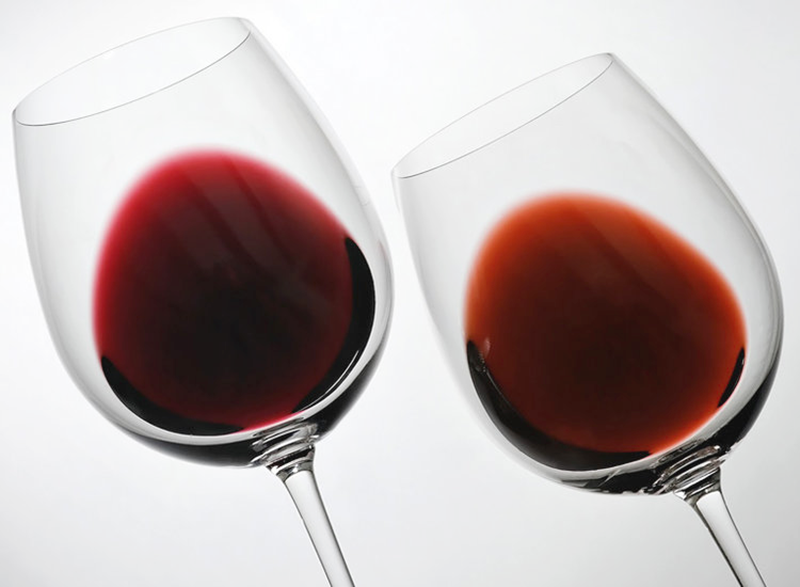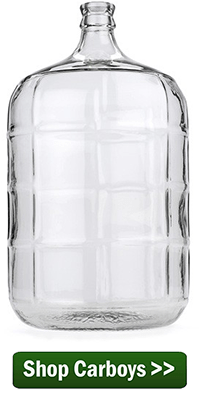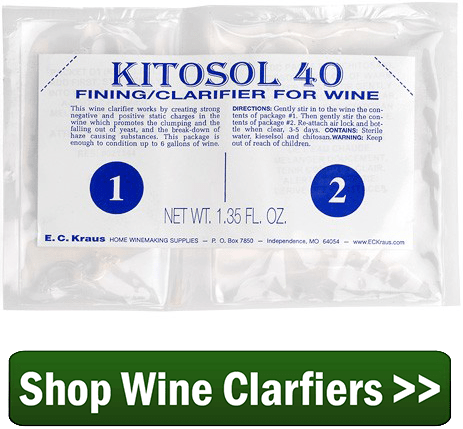 You don’t have to have a commercial winery to create excellent wines. In fact, many home winemakers produce fantastic wines that are better than the wines you buy at your local wine shop. However, as we’ve seen many times before on this blog, making top notch wine isn’t something that magically happens. You need to take great care during the winemaking process, follow all instructions, and carefully guide the process through to the very end.
You don’t have to have a commercial winery to create excellent wines. In fact, many home winemakers produce fantastic wines that are better than the wines you buy at your local wine shop. However, as we’ve seen many times before on this blog, making top notch wine isn’t something that magically happens. You need to take great care during the winemaking process, follow all instructions, and carefully guide the process through to the very end.
One of the more common faults plaguing home winemakers is wine oxidation. At certain times during the winemaking process, particularly after the primary fermentation, it is important to be careful about the exposure of the wine to the air. Excessive air exposure is a catalyst for wine oxidation.
One way to prevent too much oxygen exposure is to top up the wine to ensure very little space is available for oxygen to set up camp and cause wine oxidation. Topping up is one of the most important things you can do in the way of wine oxidation prevention.
In addition to topping up the wine, you should also be using air lock during the secondary fermentation. There are many different types of air locks, though the most common type uses water as a way to minimize oxygen exposure and maximize ease of set-up and use. The water in the air lock basically acts to allow carbon dioxide from the fermentation to escape out of the vessel while keeping oxygen from entering inside and oxidizing your wine.
Another stage where you can inadvertently cause problems with wine oxidation in your wine is during the racking/siphoning and bottling processes. Use can add fining agents to your wine to help minimize the effects oxidation, as well as use specific techniques such as positioning the exit end of the siphon hose down into the wine to reduce splashing. Minimizing splashing is another wine oxidation prevention technique.
Of course, if you exclude too much oxygen, you run into problems with reduction, which is a whole other topic on its own. If you smell  hydrogen sulfide (H2S) or “rotten eggs”, you may have excluded too much oxygen and you should aerate your wine right away to get rid of the smell.
hydrogen sulfide (H2S) or “rotten eggs”, you may have excluded too much oxygen and you should aerate your wine right away to get rid of the smell.
Just remember that for the wine oxidation process to take place you need air. The best way to manage your wine oxidation prevention efforts is to manage the air that comes into contact with the wine.
—–
Ed Kraus is a 3rd generation home brewer/winemaker and has been an owner of E. C. Kraus since 1999. He has been helping individuals make better wine and beer for over 25 years.

Dianne, using water can be an issue if there is much to top-off. If it is a pint or less to 5 or 6 gallons, this should be alright and have no noticeable affect on the outcome of the wine. For amounts larger than this you need to become a little creative. There are plenty more details on this at the following link:
http://www.eckraus.com/wine-making-topping-up
When adding sugar to a wine it is perfectly okay to dissolve the sugar in some of the wine first, but do not heat up the wine. This will cause oxidation to occur.
I am a beginning winemaker. Your article states to "top off" the wine. What do you reccomend we "top it off" with? Seems to me water would dilute the wine. Can I use a juice that does not contain sugar?
Also, if I want to sweeten the wine before bottling, I know that I can add sugar water; however, can I dissolve the sugar in a juice that does not contain sugar? Thank you for your response.
….Same as you..”a beginner”…for some 6 or 7 years now. Been drinking (choking down in many cases) my own creations. Have yet to make a bottle of wine I would give with pride, to a friend. I started with fruit (aka “country wines”) and made some that were pleasant, especially if blended. And here’s how I achieved that plateau. For example, take peach wine,which I made, from frozen peaches (purchased from an Amish fruit stand in late summer). after primary fermentation and during secondary fermentation, I would come up short and needed to top off the carboy. I didn’t want to dilute the wine with water. after much head scratching, I remembered what a friend told me when he was in the same predicament. He blended it with peach brandy, which I happened to have a 750 ml bottle in my likker cabinet. It didn’t seem to have any negative effects at all on that batch of wine. ever since, I have used that method’from time to time to top off other fruit wines also…just use a different fruit brandy. Additionally, I have saved back from, time to time, bottles of the wine I am trying to make e.g. apple wine.. Simply open a bottle of last years apple wine, and top off this years batch of apple wine with that. I have only been involved with making grape wine for 1 year now. That seems to have more challenge to it. My batch from last year turned out to be quite acid tasting ( I mean really acid tasting). So I am where you are now with “backsweetening” my wine. I have two choices (so it seems to me). I can either purchase a few bottles of a decent red Merlot to blend with my 26 bottles of Vincent, or backsweeten with some frozen concentrate grape juice (welches I think). From what I understand about “backsweetening with sugar or juice, you must ensure that refermentation doesn’t reoccur after bottling ( I speak from experience …purple on white hard to hide). one reason why I will not give a bottle of my wine to a friend until I’m sure it will not blow it’s cork. To prevent this from occurring you need to add two chemicals, Potassium metabisulfite and potassium sorbate. The exact amounts will vary according to how much wine you are treating. Aadditionally you can “backsweeten” with a product called “wine conditioner”. Global is a company which manufactures it. If you follow the directions you shouldnt need to add the Ksorbate because it is already in the mix, but the KMeta will still be necessary to control oxidation issues. Your local wine/beermaking stores will have all these things on their shelves. Good luck…I am going to try blending my acid wine with some wine from maybe a boxed merlot or cabernay(sp.). …..Conrad
Had not seen your linked ‘Topping Off’ article before. During my initial batch of wine I understood keeping oxygen exposure during secondary to a minimum. Often mentioned was adding oak wood strips/chips but that seemed to be a potential problem to insert a hydrometer and to remove after racking. I ordered a large batch of glass marbles. Note that my 2 gallon bucket of marbles will top off the equivalent of about 1 gallon of liquid. The marbles serve another good purpose by trapping sediment at the bottom of the carboy. Yes – I do get slightly concerned when I hear the first few marbles clinking when they drop to the bottom of the carboy, but after over 100 topping offs, have not had a glass carboy break or crack. I try to use small/medium size marbles for the first layer to avoid a heavy tap. Large marbles do create more blockage problems when emptying the carboys.
Have also topped off with water & with concentrated juice (if I need stronger fruit flavor). And of course racking to smaller 5, 3 and 1 gallon containers. I normally start off with 2 x 6 gallon carboys and end up with 1 @ 6 gallon + 1 @ 5 gallon (or 2 @ 5 gallon).
I added Campden tablets at the rate of 1 per gallon at bottling and my beautiful red muscadine wine turned brown!!!!!!!! I did a bench trial using my next batch and the Campden tablet, at the recommended dosage turned my muscadine wine brown!!!!
Michael, we have seen a few cases where this has occurred after adding sulfites. However, the color should turn back to normal within a few hours.
I am fermenting my kit vine for about four weeks now, but Gravity reading is only 1100, instead of 0,96.
Is it wrong or good? What should I do? Help me, please.
Tx Tom
In addition to my previous email. I used the wrong info. My S.G. reading is only 1000. What can I do?
Or should?
Tx Tom